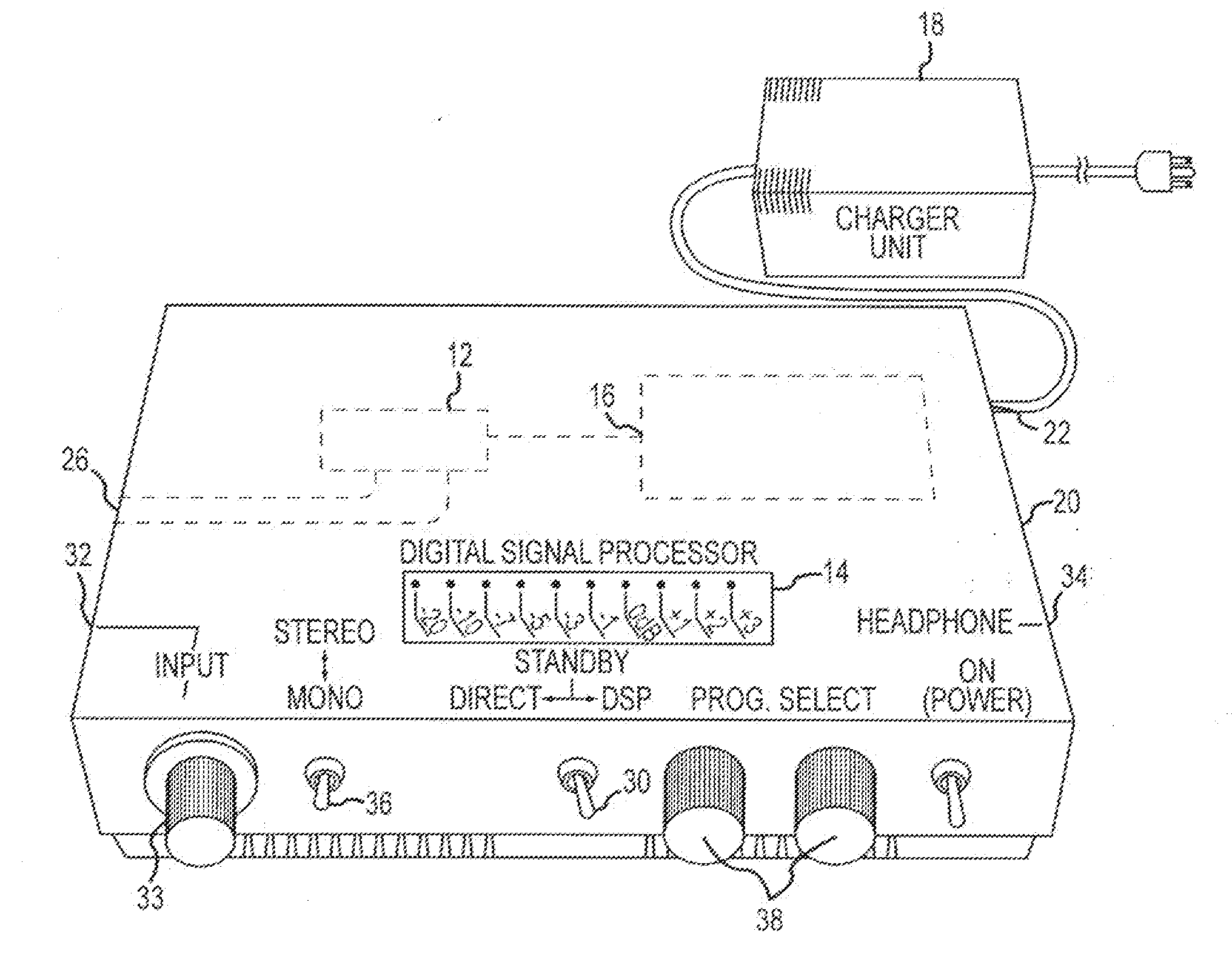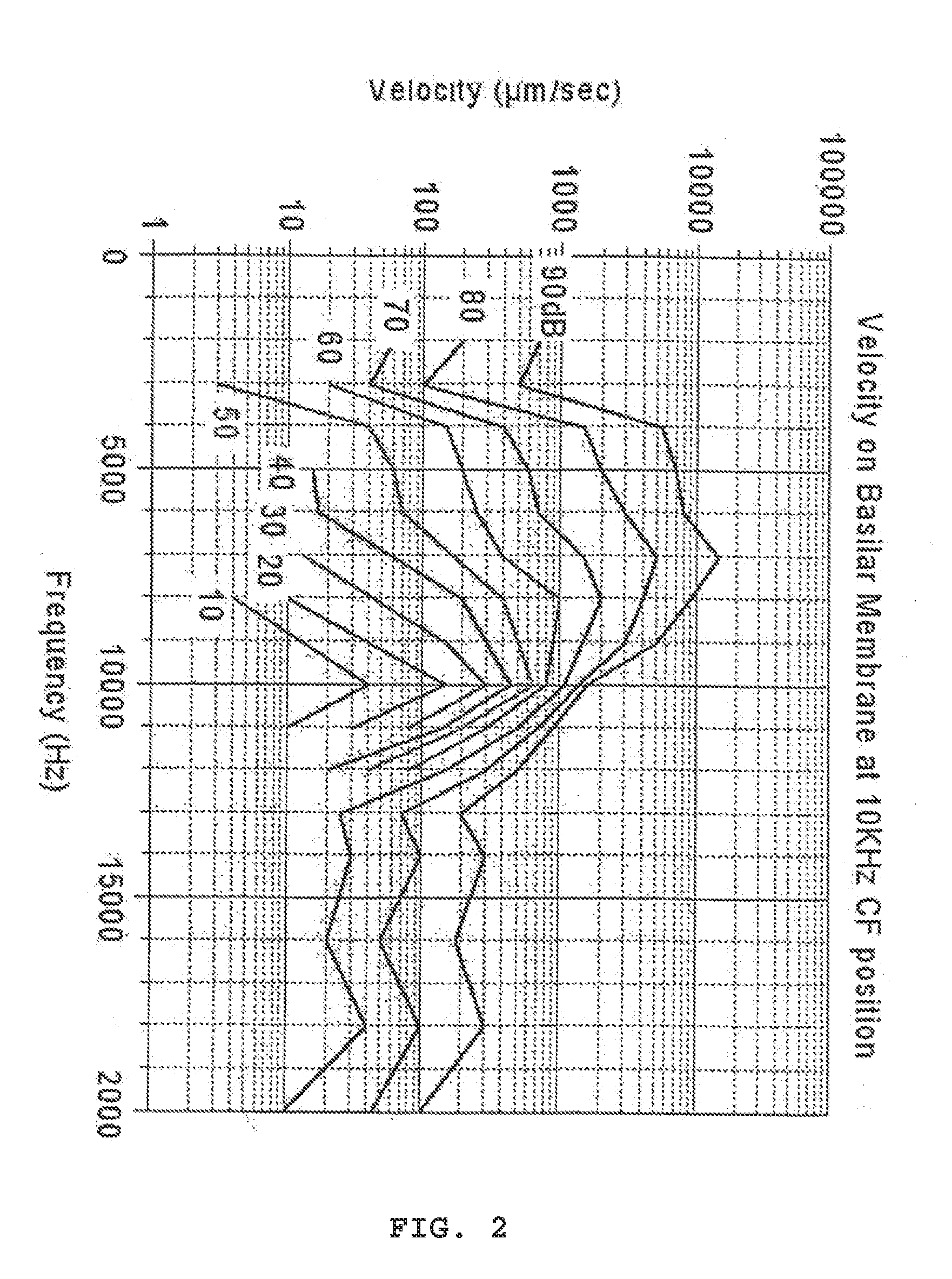Method and system for auditory enhancement and hearing conservation
a technology of auditory enhancement and hearing conservation, applied in the direction of electrical transducers, digital/coded signal limiting amplitudes, instruments, etc., can solve the problems of signal clarity, bandwidth and acoustical detail, speech, may in fact be degraded in quality, and increase in volume, so as to achieve high intensity peaks and high intensity peaks
- Summary
- Abstract
- Description
- Claims
- Application Information
AI Technical Summary
Benefits of technology
Problems solved by technology
Method used
Image
Examples
example 1
[0049]The present system and method of the present invention limits transient peak levels, improves listening comfort and allows an increased loudness sensation and clarity with less harmful sound pressure levels. FIG. 9 provides a graph of a white noise frequency spectrum of a Philips SA2115 pocket MP3 player (top line) loaded by an Able Planet Clear Harmony behind the head headset and the processing unit 12 of the system 10 (bottom line) loaded by the same headset. The output of the Processing unit 12 of the system 10 is about 9 dB lower at high input levels but higher at low input levels. The sound files that are pre-loaded on the MP3 player serve to show how dynamic signals such as speech and music are processed quite differently than continuous signals.
example 2
[0050]In this example, the power was switched on and the program selectors 38 were not pressed. The stereo input potentiometer 33 was set at maximum. Using the MP3 player to play a 500 Hz pure tone in Direct mode, the gain of the MP3 player was turned up until the LED on the VU meter 14 corresponding to a level of +1 dB was lit.
[0051]The selector switch 30 was then switched to the DSP mode. The signal then dropped to −20 dB or less: The sound was much quieter and severely distorted. Reducing the input potentiometer 8 dB (40% of maximum or about 11 o'clock on the dial position) eliminated the distortion and the DSP signal remains more than 20 dB below the direct signal. This illustrates that with the present invention, single frequencies focused on a narrow area on the basilar membrane in the inner ear will be drastically reduced without distortion. In a worst case scenario, the energy is redistributed across the membrane due to sound energy being redistributed to odd order harmonics...
example 3
[0053]Using the MP3 player to play a white noise signal in Direct Mode and with the input potentiometer 33 set to maximum, the gain of the MP3 player was adjusted until the LED on the VU meter 13 corresponding to a level of +1 dB was lit. When switched to the DSP mode, the level dropped to only −7 dB but the sound energy is safely distributed across the whole length of the basilar membrane. Thus, the present invention contributes an additional 8 dB (60%) reduction in stress on the individual hair cells in the inner ear.
PUM
 Login to View More
Login to View More Abstract
Description
Claims
Application Information
 Login to View More
Login to View More - R&D
- Intellectual Property
- Life Sciences
- Materials
- Tech Scout
- Unparalleled Data Quality
- Higher Quality Content
- 60% Fewer Hallucinations
Browse by: Latest US Patents, China's latest patents, Technical Efficacy Thesaurus, Application Domain, Technology Topic, Popular Technical Reports.
© 2025 PatSnap. All rights reserved.Legal|Privacy policy|Modern Slavery Act Transparency Statement|Sitemap|About US| Contact US: help@patsnap.com



